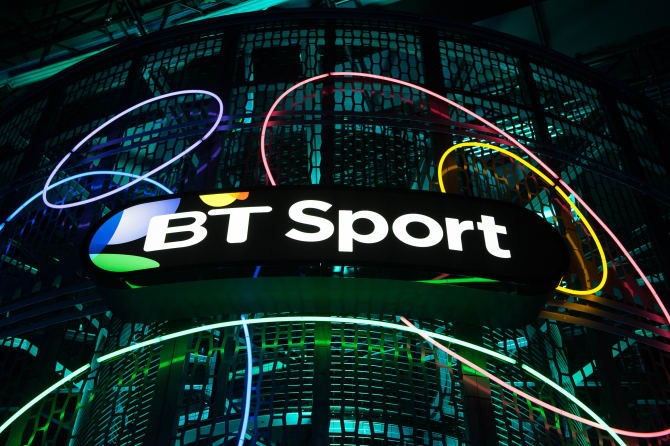BT is working on a deal to create a 50:50 sports broadcasting joint venture with Discovery, a move that means it will not exit the sports business altogether.
February 3, 2022

BT is working on a deal to create a 50:50 sports broadcasting joint venture with Discovery, a move that means it will not exit the sports business altogether.
The announcement came alongside a relatively weak Q3 results presentation from the UK incumbent, which included a topline decline and a warning that revenues for the full financial year will be lower than last year’s. As a result, the telco’s shares had taken a hit at the time of writing.
But the sports deal served as a handy distraction from the numbers.
The telco said it is in exclusive talks with Discovery geared towards the creation of the aforementioned JV, which will – presuming the firms pull it off – bring together BT Sport with Eurosport UK.
“The new combined business would remain committed to retaining BT Sport’s existing major sports broadcast rights while BT Sport customers would get access to Discovery’s sport and entertainment content, including the discovery+ app,” BT announced. That’s interesting, given that the high cost of sports rights was one reason for the reports of BT’s exit from sports broadcasting. It looks like BT has found someone to share the cost, while its customers will gain access to Eurosport content too…which at present centres on the Winter Olympics.
The parties aim to thrash out the terms of the deal this quarter with a view to launching the new combined entity later this year, subject to the relevant competition body approvals.
“With a shared ambition for growth, as well as the combination of our world class sports assets along with Discovery’s premium sports and entertainment content, our customers will benefit from even more content in more places,” said Marc Allera, CEO of BT Consumer.
Despite Allera making all the right noises, analysts are not convinced that BT is in the sports content game for the long haul.
“BT’s move into sports broadcasting has always divided opinion amid the high spend needed to acquire football rights,” said Kester Mann, Director, Consumer and Connectivity, at CCS Insight. Indeed, Mann describes Discovery as having “gate-crashed” a much-rumoured deal between BT and DAZN that would have marked the end of the road for BT Sport and the transfer of that high content spend to a company keen to snap up Premier League football rights.
“As the operator ups its focus on networks and connectivity, particularly its growing ambition in full-fibre, an eventual sale of any joint venture with Discovery could be the likely end-game for the operator,” Mann notes.
Doubtless anyone still keen to get into top flight football in the UK will be keeping a close eye on the situation.
Meanwhile, fibre is indeed the order of the day for BT.
Group chief executive Philip Jansen talked up “another record-breaking quarter on our full fibre build and a pleasing 37% increase in FTTP connections following the launch of Openreach’s wholesale pricing offer,” when commenting on BT’s latest results announcement, glossing over the telco’s topline troubles. That said, he did admit that “revenue from our enterprise divisions was softer than we expected.”
Both the third quarter and the first nine months of FY22 showed a 2% revenue slide for BT, caused by hefty declines at its Global and Enterprise business, offset to a degree by its stronger Consumer unit. Pretax profit was down 3% in the first nine months to £1.54 billion, while capex increased 24% to £3.75 billion.
BT revealed that it now expects adjusted revenue – which fell by 3% in the first three quarters to £15.7 billion – to fall by around 2% in the full year to the end of March, blaming the Covid-19 pandemic and supply chain issues.
Understandably, Jansen was keen to focus on the positives though, highlighting the rollout of fibre-to-the-premises – as mentioned above and 5G; the latter now covers 40% of the UK population, the telco says.
The trouble is, BT is not keen on sharing metrics to help us verify Jansen’s claims of “encouraging market share performance,” and so forth. It had 1.05 million FTTP connections at the end of Q3 – that’s 31 December – but does not disclose overall retail broadband customers. It also claimed to have 6.42 million “5G ready” mobile customers, but did not share how many of those are actually using a 5G handset and 5G services.
All of which means that we end up focusing squarely on the headline financials, and that revenue issue, despite Mr Jansen’s best efforts to make us look the other way.
About the Author(s)
You May Also Like








.png?width=300&auto=webp&quality=80&disable=upscale)


_1.jpg?width=300&auto=webp&quality=80&disable=upscale)


.png?width=800&auto=webp&quality=80&disable=upscale)